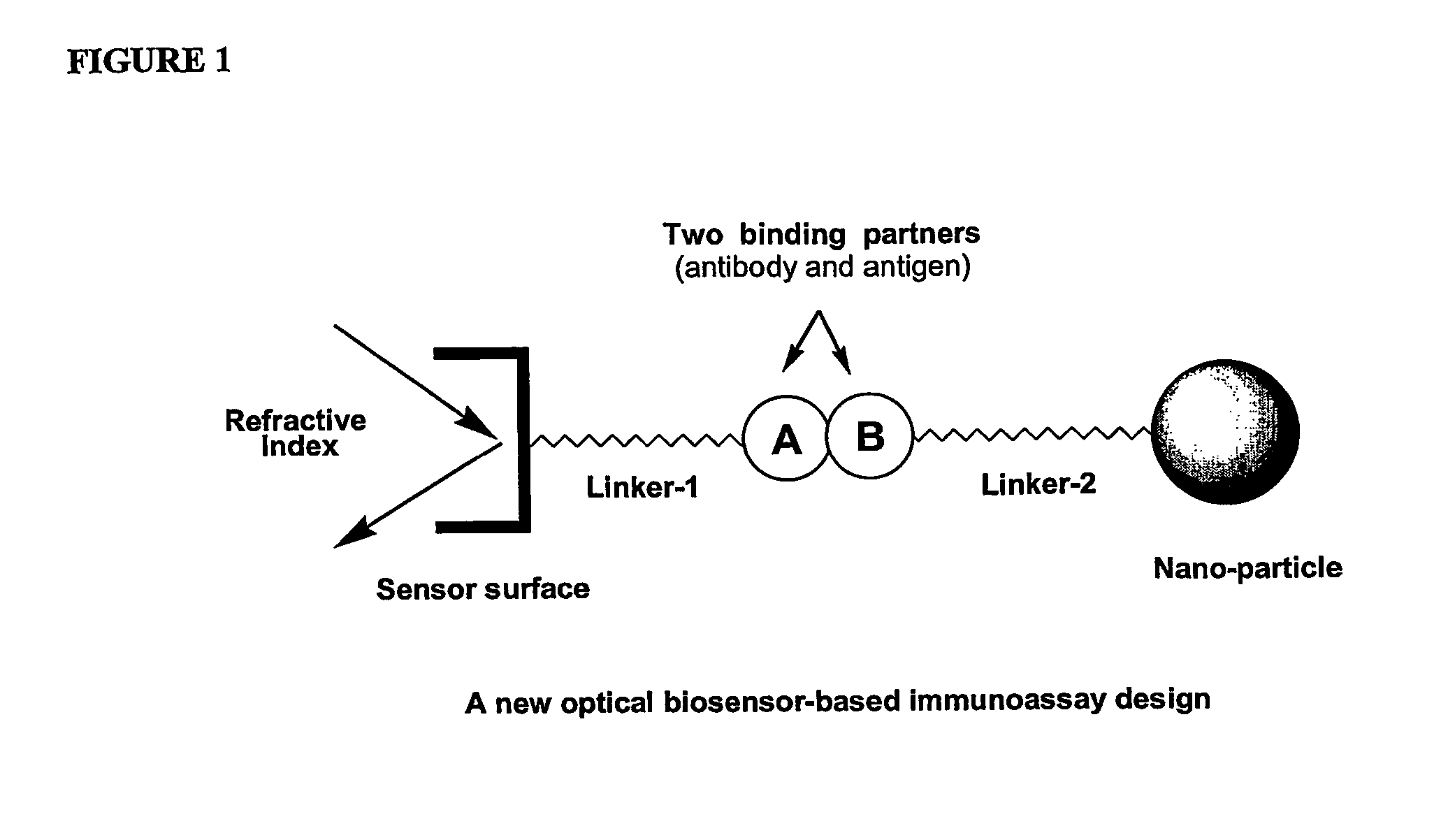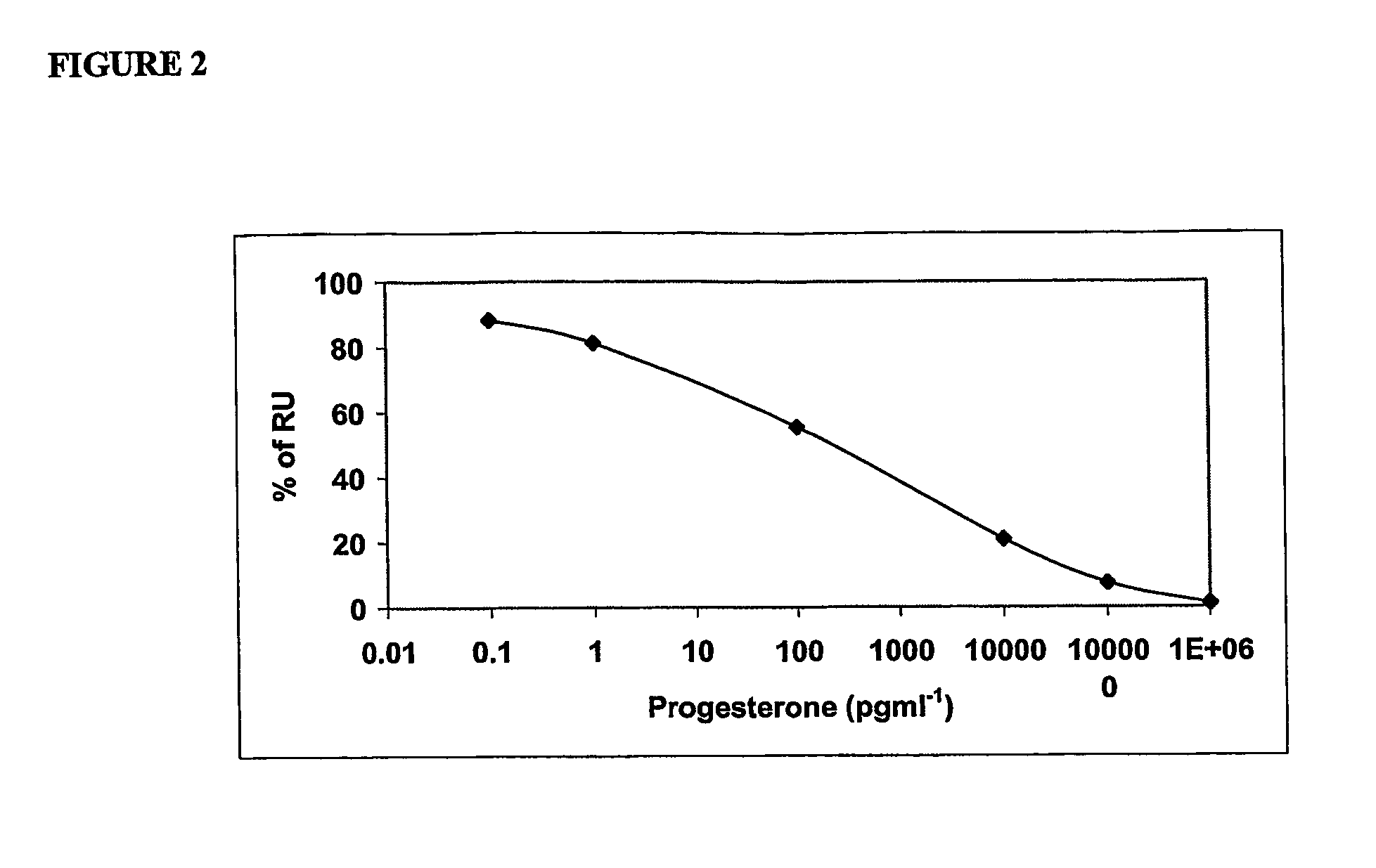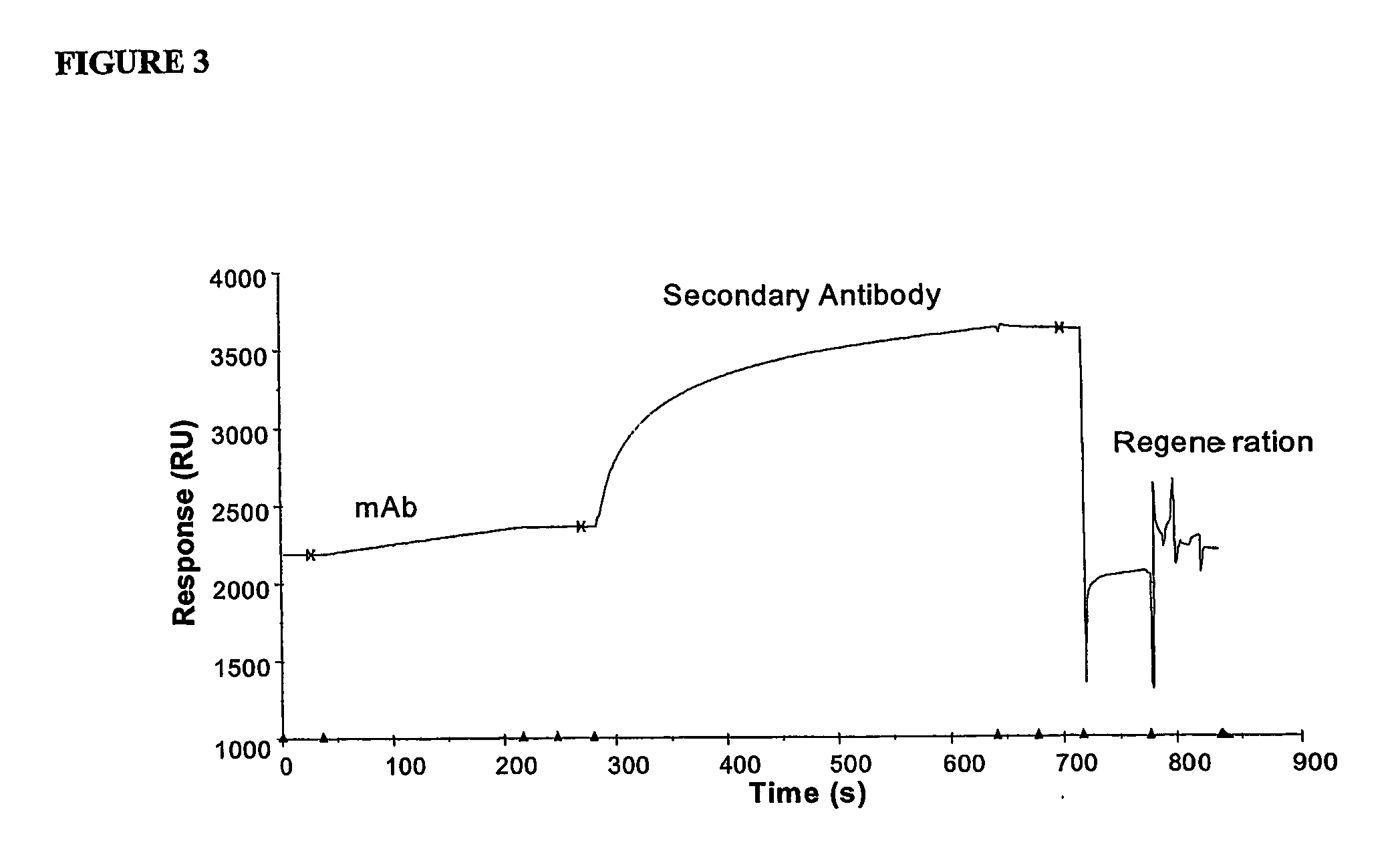Immunoassay
a technology of immunoassay and hapten, which is applied in the field of immunoassay, can solve the problems of non-competitive formats that require unique antibodies and antiidiotypes that are potentially difficult to obtain, and the assay format is not directly applicable to small molecular weight haptens, etc., and achieves good sensitivities, improved binding performance of the binding partner, and improved assay sensitivities
- Summary
- Abstract
- Description
- Claims
- Application Information
AI Technical Summary
Benefits of technology
Problems solved by technology
Method used
Image
Examples
example 1
Synthesis of Progesterone-PEG-NH2 Derivative (6, Reaction Scheme 2)
[0129] 4-mercapto-progesterone acid (4) (200 mg) was dissolved in DMF (dry, 1 mL) and DCC (128 mg in 0.5 mL dry DMF) was added dropwise followed by NHS (71.3 mg in 0.5 mL dry DMF). The reaction was stirred in the dark overnight before filtering off the solid. Mono-PEG-Boc (458.2 mg) was dissolved in dry chloroform (1 mL) and added dropwise to the stirring ester solution. Triethylamine (0.5 mL) was then added and the reaction stirred over the weekend in the dark. The solvent was removed in vacuo and the mixture was separated by column using 15:1 chloroform:methanol eluent to yield yellow oil for amine-protected product (progesterone-PEG-NHBoc). Yield: 169.8 mg (49%). Rf=0.36 (15:1 chloroform:methanol). 1H NMR (CDCl3): δ: 0.65 (s, 3H, 18-CH3), 1.13 (s, 3H, 19-CH3), 1.41 (s, 9H, Boc CH3), 2.09 (s, 3H, 21-CH3), 2.89 (m, 6H, PEG), 3.57 (m, 14H, PEG). 13C NMR (CDCl3) δ: 13.7 (18-CH3), 18-4 (19-CH3), 21.5 (11-CH2), 23.2 (...
example 2
Synthesis of Progesterone-PEG-Biotin (17)
[0131] Progesterone-PEG-NH2 (6) (160 mg) was dissolved in chloroform (1.5 mL, dried over molecular sieves 4A). Biotin active ester (113.8 mg in 1 mL of dry DMF with warming) was added dropwise to the stirring progesterone-PEG-NH2 solution. The solution was stirred in the dark for two hours before addition of triethylamine (0.5 mL) after which it was left stirring over the weekend. A solid initially forms but by the end of the reaction it has gone. The solvent was removed in vacuo and then column separated using 10:1 chloroform:methanol and 5:1 chloroform:methanol eluent. Yield (17): 95.5 mg (44%). Rf=0.70 (5:1 chloroform:methanol). 1H NMR (CDCl3): δ 0.70 (s, 3H, 18-CH3), 1.25 (s, 3H, 19-CH3), 1.72 (m, biotin), 1.80 (m, biotin), 2.14 (s, 3H, 21-CH3), 2.95 (m, 5H, PEG), 3.20 (d, 1H, biotin), 3.37 (m, 2H, PEG), 3.62 (m, 13H, PEG), 4.36 and 4.54 (d of t, 2H, biotin), 5.16 and 5.23 (d, 1H, biotin). 13C NMR δ. ES-MS: 848.1 [M+H]+, 870.1 [M+Na]+. ...
example 3
Preparation of 4-Progesterone Acid Derivative (14) and its Ovalbumin Conjugate
[0132] A solution of ε-aminocaproic acid (44.4 mg (0.34 mM) in 200 μL of UHQ water) was added drop-wise to a solution of progesterone 18-atom linker-succinate active ester (Steroids, 67, 2002, 565-572) (83.8 mg (0.11 mM) in 2 mL of dry DMF). 0.5 mL of dry DMF was used to wash out the ε-aminocaproic acid vial. The reaction was stirred over a weekend. The solvent was removed under vacuum and the resultant yellow-tinged oil reconstituted in 100 mL of chloroform and washed with 3×50 mL of distilled water. The solvent was removed under vacuum, and the resultant light brown oil was column separated using a 15:1, 10:1, 5:1, 1:1, 0:1 chloroform:methanol eluent series. The resultant clear, colourless oil was washed with a diethyl ether, n-hexane, chloroform mixture to give waxy white solids (14). Yield: 68.1 mg (80%). Rf=0.77 (5:1 chloroform:methanol). 1H NMR: δ 0.68 (s, 3H, 18-CH3), 1.25 (s, 3H, 19-CH3), 2.14 (s...
PUM
 Login to View More
Login to View More Abstract
Description
Claims
Application Information
 Login to View More
Login to View More - R&D
- Intellectual Property
- Life Sciences
- Materials
- Tech Scout
- Unparalleled Data Quality
- Higher Quality Content
- 60% Fewer Hallucinations
Browse by: Latest US Patents, China's latest patents, Technical Efficacy Thesaurus, Application Domain, Technology Topic, Popular Technical Reports.
© 2025 PatSnap. All rights reserved.Legal|Privacy policy|Modern Slavery Act Transparency Statement|Sitemap|About US| Contact US: help@patsnap.com



